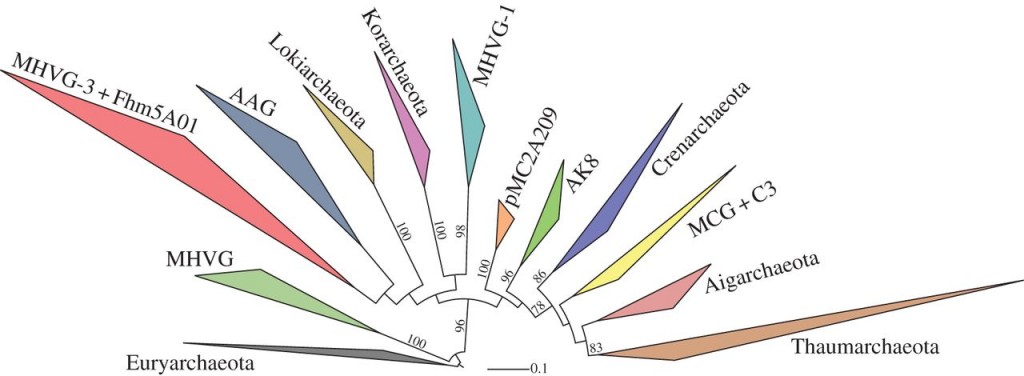Really nice paper out on microbial dark matter, deep phylogeny, and the value of obtaining genomes from across the tree of life.
Citation: Jimmy H. Saw, Anja Spang, Katarzyna Zaremba-Niedzwiedzka, Lina Juzokaite, Jeremy A. Dodsworth, Senthil K. Murugapiran, Dan R. Colman, Cristina Takacs-Vesbach, Brian P. Hedlund, Lionel Guy, Thijs J. G. Ettema. Exploring microbial dark matter to resolve the deep archaeal ancestry of eukaryotes. Phil. Trans. R. Soc. B 2015 370 20140328; DOI: 10.1098/rstb.2014.0328.
Abstract
The origin of eukaryotes represents an enigmatic puzzle, which is still lacking a number of essential pieces. Whereas it is currently accepted that the process of eukaryogenesis involved an interplay between a host cell and an alphaproteobacterial endosymbiont, we currently lack detailed information regarding the identity and nature of these players. A number of studies have provided increasing support for the emergence of the eukaryotic host cell from within the archaeal domain of life, displaying a specific affiliation with the archaeal TACK superphylum. Recent studies have shown that genomic exploration of yet-uncultivated archaea, the so-called archaeal ‘dark matter’, is able to provide unprecedented insights into the process of eukaryogenesis. Here, we provide an overview of state-of-the-art cultivation-independent approaches, and demonstrate how these methods were used to obtain draft genome sequences of several novel members of the TACK superphylum, including Lokiarchaeum, two representatives of the Miscellaneous Crenarchaeotal Group (Bathyarchaeota), and a Korarchaeum-related lineage. The maturation of cultivation-independent genomics approaches, as well as future developments in next-generation sequencing technologies, will revolutionize our current view of microbial evolution and diversity, and provide profound new insights into the early evolution of life, including the enigmatic origin of the eukaryotic cell.
Since it is open access I copied some of the figures from the paper below to tempt people to look at the paper in more detail:






